April 29, 2025
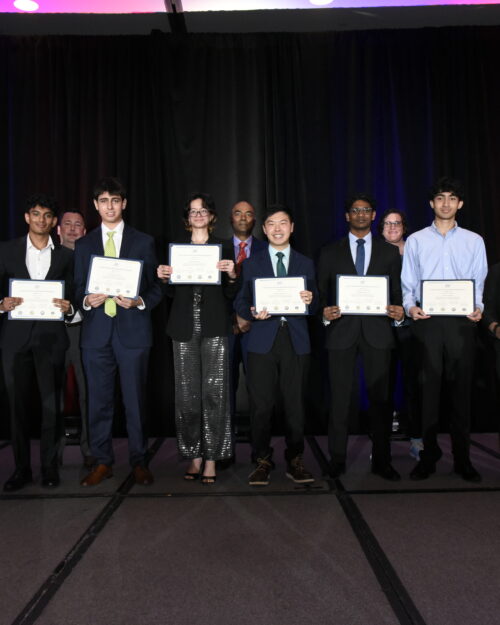
The 63rd annual National Junior Science and Humanities Symposium (NJSHS), held from April 22–26, 2025, in Chantilly, Virginia, celebrated the innovative research of 239 high school students from across the U.S., Puerto Rico, and DoDEA schools worldwide. Sponsored by the U.S. Department of Defense and administered by the National Science Teaching Association (NSTA), the event awarded over $200,000 in scholarships and cash prizes to 48 national winners across eight STEM categories.
JSHS provides a platform for high school students to present original research in science, technology, engineering, and mathematics. Students first compete in regional symposia, with the top five from each region advancing to the national level. At the National Symposium, the top two Regional Finalists deliver oral presentations for scholarships ranging from $4,000 to $12,000, while the remaining three present posters for cash awards.
At this year’s NJSHS, finalists had the opportunity to present their research to a panel of STEM experts from the U.S. Office of the Secretary of Defense and the Departments of the Army, Navy, and Air Force. These judges, who are leaders in their fields, brought real-world experience and insight to the evaluation process.
This year’s finalists went above and beyond with their research. Their projects spanned a variety of topics, from cutting-edge medical advancements to addressing some of the most pressing environmental challenges we face. They put in countless hours, running experiments, analyzing data, and pushing the limits of what’s known in their fields. Their hard work and dedication are inspiring, and the innovative research they presented will have a lasting impact on the scientific community and beyond.
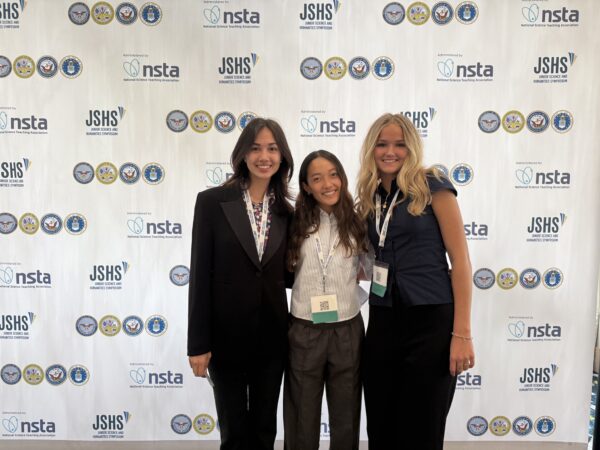
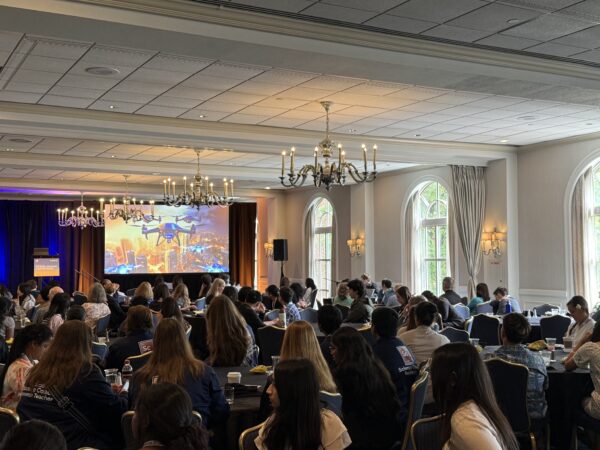
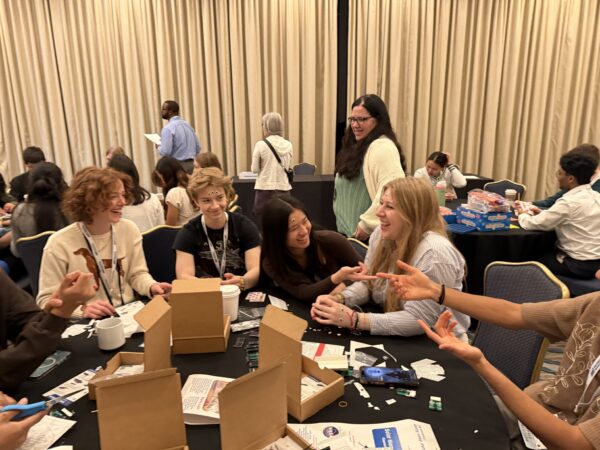
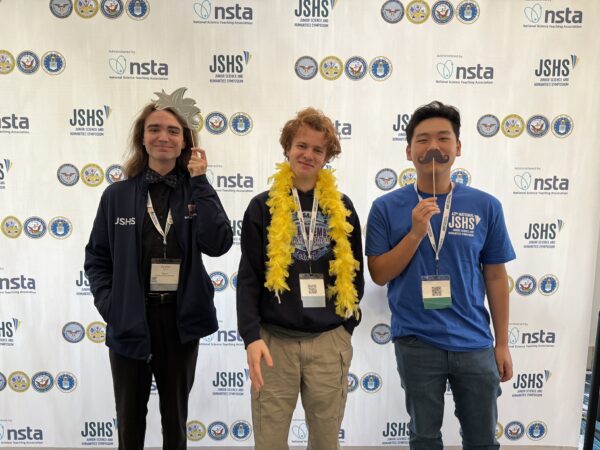
“Each year, the students at JSHS redefine the possibilities in STEM,” said Winnie Boyle, Senior Director of Competitions, NSTA. “Their groundbreaking research and unwavering curiosity inspire us all, and we are honored to support their academic journeys with scholarships and awards.”
Throughout the four days of the Symposium, students had the chance to do more than just present their research. They participated in valuable networking opportunities with the judges and other STEM professionals. These interactions provided students with meaningful insights into potential career paths and the chance to connect with experts in their fields. They also had the opportunity to engage with fellow participants during social events, fostering a sense of community and collaboration.
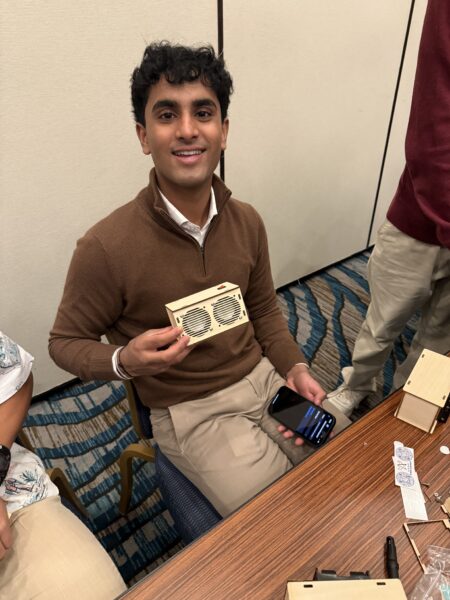 One of the standout features of the Symposium was the hands-on makerspace sessions and lab activities. Students had the chance to build their own speakers, which allowed them to apply their creativity and technical skills in a practical, real-world setting. At the end, they were able to test their work and leave with fully functional speakers—ready to play music.
One of the standout features of the Symposium was the hands-on makerspace sessions and lab activities. Students had the chance to build their own speakers, which allowed them to apply their creativity and technical skills in a practical, real-world setting. At the end, they were able to test their work and leave with fully functional speakers—ready to play music.
In another exciting session, students worked with members of the Air Force Research Laboratory to design and build paper cargo planes that could carry weight. This challenge tested their engineering skills and pushed them to think critically about design and functionality. The task not only sparked innovation but also added a fun, competitive edge to the experience, as students worked in teams to perfect their planes and see how much weight they could transport.
Congratulations to all of our National Finalists and the 2025 winners! Find the press release, here, and the full list of winners, below.
Registration for next year’s Junior Science and Humanities Symposium opens in the fall. Learn more at www.jshs.org.
1st Place Oral Presentations: earning $12,000 scholarships
Biomedical Sciences
Siri Peddinti, Texas, Plano East Senior High School
Vocalyze: A Deep Learning Approach to Detecting Major Depressive Disorder (MDD) and Tracking Treatment Efficacy via Vocal Acoustic Inflections and Sentiment Analysis
Chemistry
Pragathi Kasani-Akula, Georgia, South Forsyth High School
Multi-Color Magneto-Fluorescent Nanoarchitectures for the Targeted Identification of Exosomes of Triple Negative Breast Cancer
Engineering and Technology
Sean Skinner, New York-Long Island, Ward Melville High School
Physics-Informed Machine Learning for Many-Objective Generative Design
Environmental Science
Matthew Lo, Delaware and Philadelphia, The Haverford School
BeeMind AI: Development of an Artificial Intelligence-Based System to Assess Honeybee Health, Behavior, and Nutrient Effects
Life and Behavioral Sciences
Selena Qiao, North Central, Breck School
Turf Trouble: Does The DEET In Bug Repellent Really Kill Grass? Year II
Math and Computer Science
Eric Buehler, New England Northern, Home School
AI on Edge: Novel Post-Training Quantization for Education Applications
Medicine and Health
Sritej Padmanabhan, Pennsylvania, North Allegheny Senior High School
ParkinSense: A Telehealth Toolkit for Quantitative Analysis of Motor Symptoms in Parkinson’s Disease
Physical Sciences
Aiden Kwon, California Southern, Palos Verdes Peninsula High School
Revolutionizing Turbulence Studies: Novel Low-Cost Zero Mean-Flow Chamber Design and Physics-Informed Tensor Basis Neural Network
2nd Place Oral Presentations: earning $8,000 scholarships
Biomedical Sciences
Aaron Weinberg, New York-Upstate, The Masters School
Characterizing the RyR2-Mediated Cardiac Pathophysiology of COVID-19 in Rodent Models
Chemistry
Aarush Tutiki, Southwest, Albuquerque Academy
ICEFAB-Nano: An Integrated Computational-Experimental Framework to Accelerate the Development of Highly Biofunctional Nanotherapeutics for Healthy and Cancerous Applications
Engineering and Technology
Cooper Taylor, Connecticut, Greenwich Country Day School
Next-Generation VTOL Drones: A Breakthrough in Tilt Mechanism and Modular Design for Optimization and Accessibility
Environmental Science
Anna Tringale, North Carolina, North Carolina School of Science and Mathematics
Investigating the Influence of Coal Ash Heavy Metal Leachate on Thyroid Hormone Concentration, Hormone Receptor Gene Expression, and Spectral Sensitivity in Danio Rerio
Life and Behavioral Sciences
Siddharth Sridharan, Arkansas, Little Rock Central High School
The Neurobiology of Voluntary Exercise: A Novel Approach to Alleviate Chemobrain by Promoting Hippocampal Neurogenesis
Math and Computer Science
Max Lee, Georgia, Gwinnett School of Mathematics, Science, and Technology
Multi-Branch Temporal-Spectral LSTM-CNN in Deepfake Audio Detection
Medicine and Health
Aakash Bhattacharyya, Arkansas, Central High School
Early Detection of Critical Salmonella Cases for Pre-Emptive Treatment via Novel Biomarkers discovered through Protein Domain Analysis and Machine Learning
Physical Sciences
Padmalakshmi Ramesh, Wyoming and Colorado, Laramie High School
A Novel Method to Analyze Thermonuclear Explosions in Four Binary Star Systems Using NASA’s High Time Resolution TESS Data
3rd Place Oral Presentations: earning $4,000 scholarships
Biomedical Sciences
Maya Hammoud, Michigan, Detroit Country Day School
Decoding ASXL3: A Novel Biomarker and Treatment for Neurodevelopmental Disorders
Chemistry
Avani Kaur, Virginia, Mills E. Godwin High School
Combating Alzheimer’s Disease: Design and Synthesis of a Novel Drug Molecule for Targeted Metal Chelation Therapy
Engineering and Technology
Maya Trutschl, Louisiana, Caddo Magnet High School
Mitigation of Pressure Injuries: Inertial Wearable and Computer Vision Approaches
Environmental Science
Lakshmi Agrawal, Washington, Interlake High School and Stanford Online High School
A Novel Method of Water Purification: Optimizing Foam Fractionation for Effective Broad-Spectrum Removal of DBP and DBP Precursors in Chlorinated Drinking Water
Life and Behavioral Sciences
Vinil Polepalli, New Jersey Southern, High Technology High School
Effects of Epigallocatechin Gallate (EGCG) and Piperine Compounds on the Regeneration of D. Tigrina
Math and Computer Science
Brandon Bonamarte, Tennessee, Oak Ridge High School
Identifying Key Factors to Improve Autism Spectrum Disorder Diagnosis with Machine Learning
Medicine and Health
Diya Shah, Texas, Plano East Senior High School
The Salt to My Pepper: Utilizing the Bioactive Descriptors of Piperoyl Piperidine on Drosophila Melanogaster as a Neoteric Treatment for Breast Cancer
Physical Sciences
Marcus King, Illinois, Governor French Academy
Water World Exoplanet Atmospheric and Spectral Data Analysis via Thermodynamic Modeling and Unsupervised Machine Learning
1st Place Poster Presentations
Biomedical Sciences
Hamsini Ramanathan, Washington, Seattle Academy of Arts and Sciences (SAAS)
Chemistry
Wanda Wu, Kentucky, duPont Manual High
Engineering and Technology
Anusha Agarwal, Greater Washington, D.C., Thomas Jefferson High School for Science and Technology
Environmental Science
Travis Osaki, Hawaii and Pacific, Pearl City High School
Life and Behavioral Sciences
Hailey Kim, Virtual, Marriotts Ridge High School
Math and Computer Science
Henry Zou, Heartland, Johnston Senior High School
Medicine and Health
Roshan Amurthur, California Northern, The Harker School
Physical Sciences
Aditya Sengupta, Washington, The Overlake School
2nd Place Poster Presentations
Biomedical Sciences
Navneeth Badhri, Washington, Redmond High School
Chemistry
Caleb Rowe, Heartland, Central City High School
Engineering and Technology
Jessie Brenay, DoDEA Europe, Kaiserslautern High School
Environmental Science
Riya Kalluvila, Wisconsin/Upper Peninsula Michigan, Hartford Union High School
Life and Behavioral Sciences
Norah Ahmed, Indiana, Evansville Day School
Math and Computer Science
Sebastian Lashmet, New York-Upstate, Byram Hills High School
Medicine and Health
Rebecca Jacob, Ohio, Solon High School
Physical Sciences
Max Berg, South Carolina, Spring Valley High School
3rd Place Poster Presentations
Biomedical Sciences
Pavan Subramani, West Virginia, Morgantown High School
Chemistry
Michelle Diep, Georgia, Gwinnett School of Mathematics, Science, and Technology
Engineering and Technology
Alexandra Sigmond, North Central, Breck School
Environmental Science
Jordan Chong, Intermountain, Davidson Academy
Life and Behavioral Sciences
Riya Raina, New York-Upstate, Briarcliff High School
Math and Computer Science
Daniel Han, New Jersey Northern, Millburn High School
Medicine and Health
Miyeong Berran, DoDEA Pacific, Humphreys High School
Physical Sciences
Daniela Méndez Cora, Puerto Rico, Escuela Especializada en Ciencias y Matemáticas Genaro Cautiño
About Junior Science and Humanities Symposium
Junior Science and Humanities Symposium (JSHS) is a Department of Defense sponsored STEM competition (U.S. Office of the Secretary of Defense and the U.S. Departments of the Army, Navy, and Air Force) that encourages high school students to conduct original research in the fields of science, technology, engineering, and mathematics (STEM) and publicly recognizes students for outstanding achievement. By connecting talented students, their teachers, and research professionals at affiliated symposia and by rewarding research excellence, JSHS aims to widen the pool of trained talent prepared to conduct research and development vital to our nation. JSHS regional and national symposia are held during the academic year and reach thousands of high school students and teachers throughout the United States, Puerto Rico, and the Department of Defense Schools of Europe and the Pacific. Students must first participate in their regional symposium where they compete for selection to present at the national symposium each year. JSHS is administered by the National Science Teaching Association. For more information, please visit www.jshs.org.
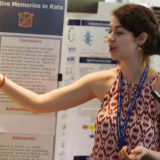
Junior Science and Humanities Symposium (JSHS)
At Junior Science and Humanities Symposium (JSHS), high school students compete for scholarships and recognition by presenting results of their STEM projects to a panel of judges.
More About Junior Science and Humanities Symposium (JSHS)Find a Volunteering Opportunity
Visit our Program Volunteers page for a tool to find the best opportunity for you.
